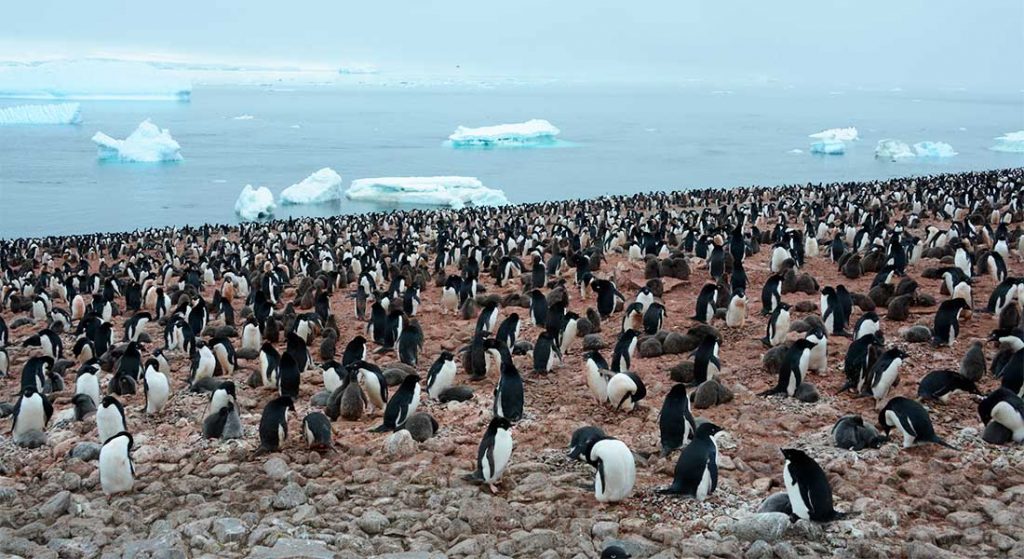CENPERM: Antarctic king penguins emit large amounts of laughing gas via feces
King penguins are the world’s second-largest penguin species; they live off fish and krill, both of which contain nitrous oxide. A study led by researchers from the Center of Excellence CENPERM now shows that the king penguins’ nitrous oxide-containing diet causes the animals to emit extreme amounts of laughing gas, a greenhouse gas, via their feces. The results, which were recently published in the scientific journal Science of the Total Environment, can be used to improve the procedure for fertilization in Danish agriculture.

The worlds’ second-largest penguin species – the king penguin – live in colonies of hundreds of thousands on the sub-Antarctic island of South Georgia, which is part of the British Sandwich Islands. Their food primarily consists of fish and krill, both of which contain large amounts of nitrous oxide absorbed via plankton in the ocean. A new study led by researchers from the DNRF’s Center for Permafrost (CENPERM) at the University of Copenhagen shows that the king penguins’ nitrous oxide-containing diet causes them to emit extreme amounts of laughing gas through their feces, – also called “guano.”
“Penguin guano produces significantly high levels of nitrous oxide around their colonies. The maximum emissions are about 100 times higher than in a recently fertilized Danish field. It is truly intense – not least because nitrous oxide is 300 times more polluting than CO2,” said Professor Bo Elberling, head of center at CENPERM and senior author behind the study. He added:
“It is clear to us that the level of nitrous oxide is very high in places where there are penguins — and thereby guano — and vice versa, lower in places where there is none.”
The nitrous oxide from the penguins’ feces is emitted to the sub-Antarctic soil, where it is converted into laughing gas, a greenhouse gas that is affecting the surrounding environment. And since the king penguins can be found in growing colonies of thousands, the new information about their climate-affecting feces can be used both within the penguins’ environment and in a larger environmental context.
“While nitrous oxide emissions in this case are not enough to impact Earth’s overall energy budget, our findings contribute to new knowledge about how penguin colonies affect the environment around them, which is interesting because colonies are generally becoming more and more widespread,” said Professor Elberling. He added:
“We should learn from this in relation to Danish agriculture, where large quantities of nitrous oxide are emitted by nitrogen fertilizers in fields. One of the things we can learn, for example, is how and when to fertilize vis-à-vis the optimal conditions for soil bacteria to produce nitrous oxide.”
